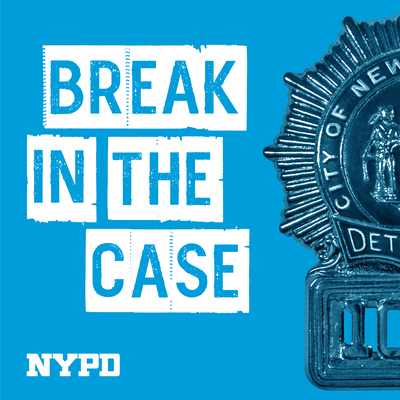If you are like me, you like to spend your free time watching crime shows. Shows like Criminal Minds and CSI take us into the minds of serial killers. We root for the team of investigators to see the clues and solve the crime. Most of these shows are about catching the bad guy. Yet, we learn that to understand the criminal, we must figure out who the victim was. This process is known as victimology. Often, a crime is so gruesome that the victim is unidentifiable. How can investigators understand the victim if they cannot even figure out who the person even was? These unidentified bodies are the hardest for cops. These cases can become cold cases that remain unsolved for decades. They leave the victim’s family trapped in the tragedy of not knowing what happened to their loved one. They have no closure; there is nobody to bury.
Detectives frequently struggle with these cold cases, and that is where the true-crime podcast, A Break in the Case, comes in. The NYPD needed to do something about these cold cases, so they decided to produce a podcast to ask the public to help them solve these cases. One case, in particular, haunted them. It was the case of “Baby Hope”. This podcast which, is divided into five parts, delves into details of the case from the discovery of the body, the police’s emotional reaction to the case, the tip that helped solve the crime, the catching of the perpetrator, and the shocking reveal about what happened to Baby Hope. This podcast is an amazing example of the dedication of law enforcement and how perseverance and scientific technology can help put a criminal behind bars, get justice for a little girl, and give her family closure at last.
On July 23, 1991, police responded to the report by construction workers who found the body of a four-year-old girl in a picnic cooler in an NYC park. It starts with a very graphic interview of these construction workers and how they found the body. The podcast warns that the contents are not suitable for all audiences and then tells of how the cooler was filled with maggots covering the body of this girl and how the construction workers were sickened by this discovery. The police sent out a bulletin to the community, asking if anyone saw anything or could help identify the victim. They received no answers. According to podcast Host Carrie Reilly, the 34th Precinct could not stand the fact that a little girl was left with no one to mourn for her. They named her Baby Hope. The detectives felt so connected to the case that they paid for an elaborate funeral and buried Baby Hope in a grave with a stone that asked for help solving the crime. This grave stood unnamed for 22 years. These officers started the saying, “we are them”, we are all the homicide victims until we solve the case, we will not rest. The wives of the officers picked out a little white dress to bury her in. The podcast explains how computer technology was able to take the skull of the victim and reconstruct her face. Police were then able to put a sketch out of the victim. Yet, no one identified her. It took 22 years for the police to get her name: Anjelica Castillo. They had her name. They located her mother. They tested the mother’s DNA and compared it to the remains, and they had a match. The police solved the crime and now had a name to put on the grave that they had stood watch over for over two decades. From this identification, police were able to determine that Anjelica’s uncle, Conrado Juarez, raped and killed her. They got his confession, and he was convicted.
These podcasts are very graphic and give a first-hand account of the investigation. The interviews are very emotional. However, since it was a podcast, it lacks the effect that a visual documentary would have had. I enjoyed following up on the story and looking at pictures and articles about this case. While I enjoyed hearing about this case, I think that a skilled filmmaker could make an excellent documentary on this subject. This podcast is a very inventive way for the police to get the public’s interest in cold cases and to get help solving crimes, but it needs to go further.
